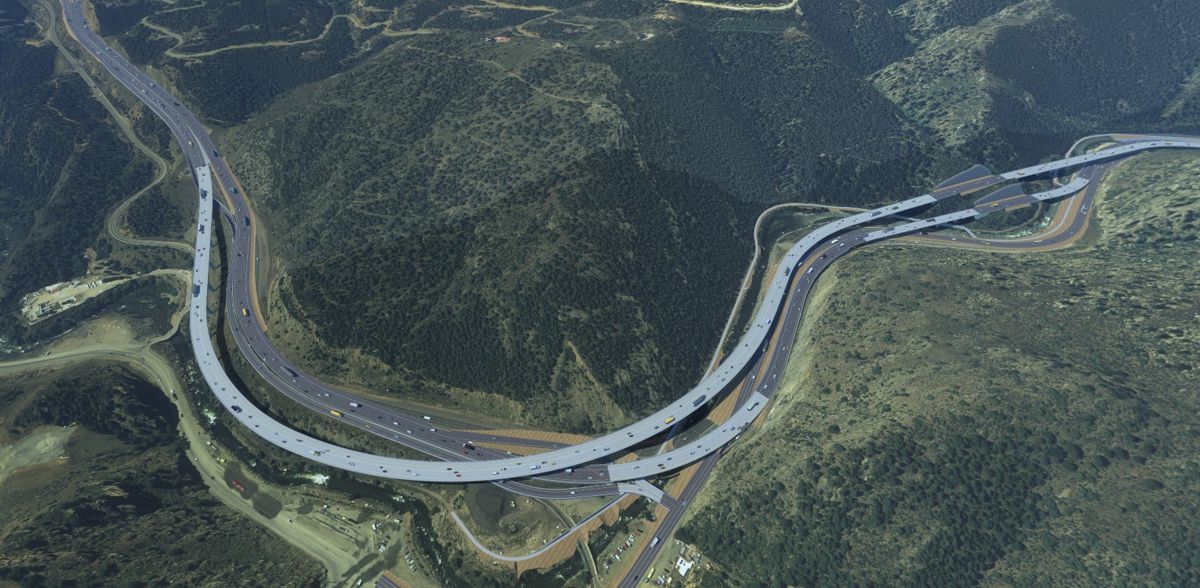Modular Site Accommodation – how the humble site cabin has evolved
Construction projects on our highways have undergone enormous changes over the last three decades, particularly through digitisation, an increased focus on safety, sustainability, and the move towards modern construction methods. Even in the last three years, life on construction sites has shifted dramatically, with Covid-19 changing the way we manage projects and interact on site.
So it’s no surprise that the nature of site accommodation has also changed beyond all recognition. Having started out as little more than basic shelters, they’ve now been transformed into sophisticated, modular buildings which can be configured to almost any given specification.
With over 60 years’ experience in this sector, we understand the needs and challenges of life on highways sites and have a wide range of solutions to match.
Here, Tom Baker, Business Development Director, Algeco Hire, looks at how site accommodation has developed over the years, with the focus shifting towards staff welfare, site management and sustainability.
‘The earliest, timber site cabins date back to the 1950s, when we became the first to design cabins specifically for construction workers. At that time, they consisted of little more than four walls, a door and a floor. In the mid-60s, steel stackable site accommodation that could be heated began to appear. By 1995, we were the first to incorporate WCs and welfare facilities.
Endless configuration options
Although individual modules are still popular, most larger sites now position several modules together to create flexible, open-plan spaces, as temporary site accommodation can be built to almost any size, layout or specification.
Whole site villages can be created using scores of linked and stacked units, depending on workforce size. Internal walls can be removed for large, open-plan offices or added to create quieter workspaces. Staff welfare areas, kitchens, storage facilities and shower blocks can be incorporated according to requirements.

360º turnkey solutions
Once the building is in place, sophisticated systems can be added, from IT and comms networks, to the latest smart tech solutions which optimise energy usage to cut costs and carbon emissions.
360º turnkey solutions are also available, right down to delivery and installation of kettle and toasters, and even electrical testing.
Under the Health & Safety Act 1974 (HSWA) and the Electricity at Work Regulation (EAWR), employers have a legal duty to ensure the workplace is a safe environment. The new electrical testing element of our 360º turnkey service provides customers with peace of mind that the site accommodation meets all these requirements post-handover, including an NSI certificate which provides customers with an electrical installation condition report for all their site accommodation.
Electrical testing on site is important because once site accommodation is delivered, customers will usually connect to a local/generator electrical source. These new connections require re-testing to ensure everything is safe for use.
Off-grid solutions
However, the latest developments in site accommodation eliminate the need to connect to an electrical source altogether, by enabling sites to generate power through a combination of low carbon HVO and photovoltaic panels, essentially taking the units ‘off grid’.
The use of HVO and battery-powered generators minimises emissions, and batteries are recharged using renewable solar energy. To reduce carbon emissions even further, the technology inside the buildings can be optimised too, making these off-grid solutions the pinnacle of sustainability.
Smart technology actively manages energy consumption by monitoring a building’s occupancy, temperature, humidity, light and air quality, then feeding the information into the system software.
As well as generating significant energy and cost savings, solar-powered, Smart tech-enabled site solutions mean customers don’t have to wait for, or incur the expense of, connecting to the grid – getting sites up and running quickly, efficiently and sustainably.

Designed with sustainability in mind
Modular temporary buildings are also well-insulated, energy-efficient, recyclable and designed with sustainability in mind. In fact, this is a huge part of their appeal, because the construction industry is very focused on climate change.
Companies are looking at how they can work more efficiently and sustainably, and many have set challenging targets to reduce emissions. This has been the catalyst for climate control technologies which are now capable of reducing energy consumption within site accommodation by up to 65% – potentially saving hundreds of pounds or more each year – as well as reducing CO2 emissions. Other energy saving features include double glazing and water-saving, while smart technology can monitor, manage and reduce carbon emissions and energy consumption.
Crucially, the buildings can be recycled and reused once the project is complete, reducing waste and extending the product’s life.
Welfare in mind
Modular site accommodation is evolving to meet the changing needs of today’s construction companies. Staff wellbeing is being prioritised more than ever, so it’s no surprise that site accommodation has developed to meet these needs. Facilities such as drying rooms, prayer rooms, segregated bathrooms, breakout areas and kitchens are all common features of modern site buildings.
As well as catering for the needs of a diverse workforce, temporary modular buildings offer increased site security and fire protection, ensuring staff safety and providing attractive, high-quality accommodation. This in turn widens the talent pool and combats the skills shortage by helping to attract skilled workers who may not have previously considered a career in construction.
It’s clear to see that the humble site cabin has evolved beyond all recognition, and today’s highly sophisticated modular site accommodation will continue to play an important role on highways projects for years to come.















